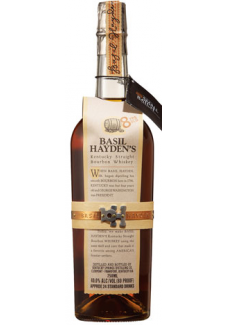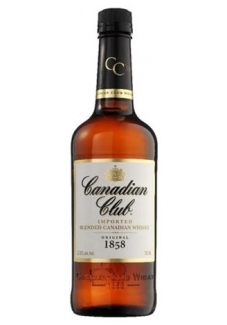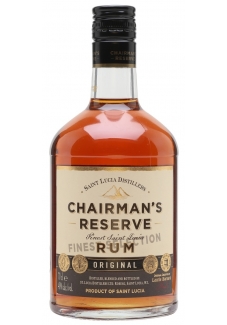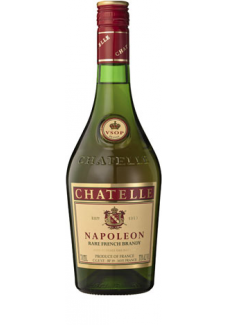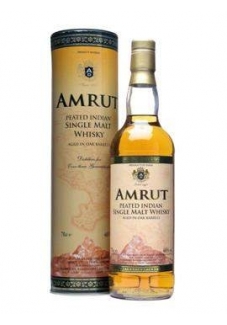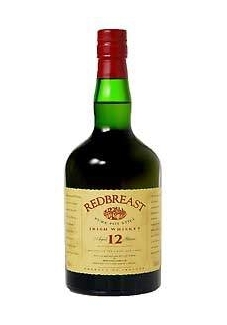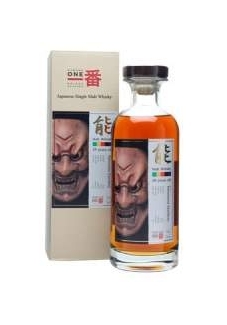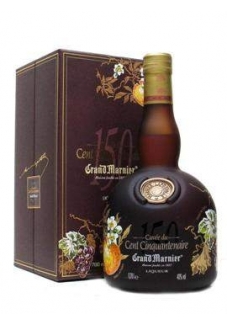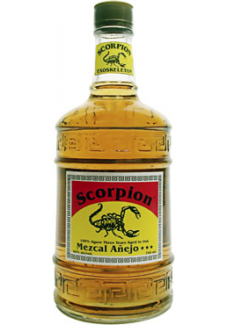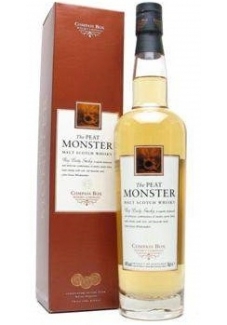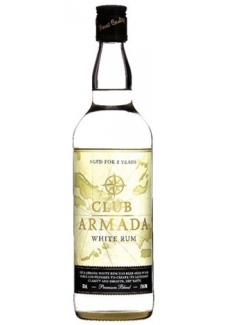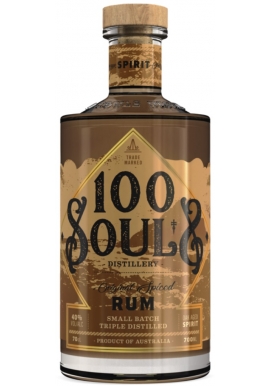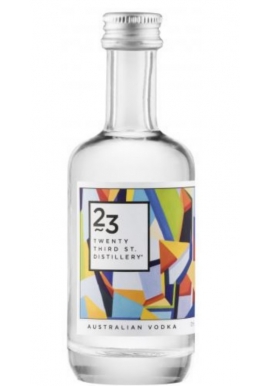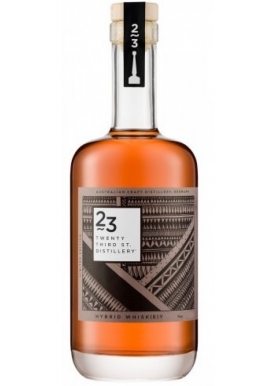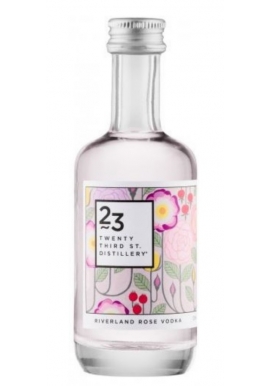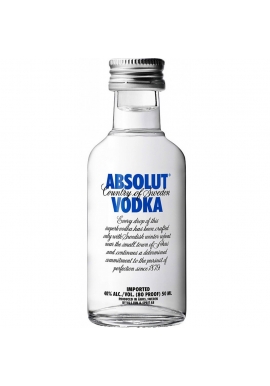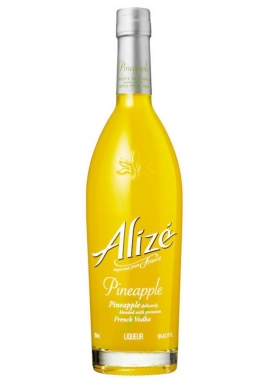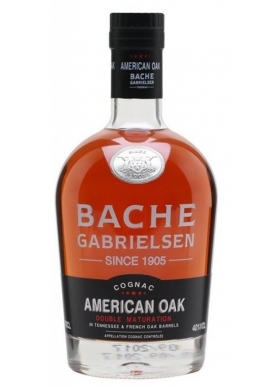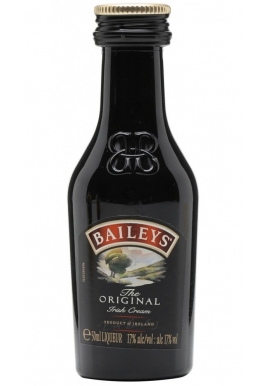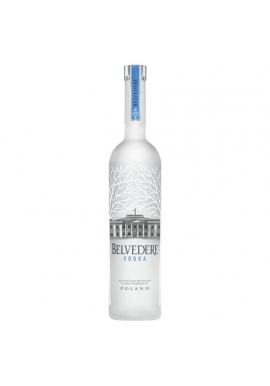SPIRITS ~ LIQUEURS
- Absinthe
- Apertifs
- Armagnac
- Australian Brandy
- Australian Dark Rum
- Australian Vodka
- Australian White Rum
- Bitters
- Bourbon Whisky
- Canadian Whisky
- Cognac
- French Whisky
- Gin
- Gold Rum
- Imported Brandy
- Imported Dark Rum
- Imported Vodka
- Indian Whisky
- Irish Whisky
- Japanese Whisky
- Liqueurs
- Mezcal
- Moonshine
- Ouzo
- Sake
- Scotch Whisky
- Tequila
- Welsh Whisky
- White Rum
For the uninitiated, this moment can be the same sort of trial a formidable wine list presents to one whose familiarity with the beverage extends to the house white. After dinner drinks are a distinct and complex element of a meal, one that has only recently engaged the interest of Americans. In Europe for hundreds of years distilled liquor has ...
For the uninitiated, this moment can be the same sort of trial a formidable wine list presents to one whose familiarity with the beverage extends to the house white. After dinner drinks are a distinct and complex element of a meal, one that has only recently engaged the interest of Americans. In Europe for hundreds of years distilled liquor has had its place at the end of the meal, not at the beginning, as is the practice in the United States.
Drinking chilled Vodka seemed popular as before as well as after dinner , in Italy. Again depending on the individual Scotch or Bourbon often preface, a meal. .Even the core after dinner drinks have been imbibed as the sun is rising, not setting. The French working man occasionally enjoys a shot of Calvados in his or hers morning coffee, called café Calva. Italians do the same with grappa - but it is more discreetly called a café cometto.
The English of Empire days loved port at almost any time of the day or night. Sherry considered as an aperitif. Champagne, the one truly all purpose alcoholic drink, is a propos at breakfast, lunch, and dinner and anytime during, after and in between.
SPIRITS ~ LIQUEURS There are 107 products.
Subcategories
-
Absinthe
Absinthe is historically described as a distilled, highly alcoholic (45–74% ABV / 90–148 U.S. proof) beverage.It is an anise-flavoured spirit derived from botanicals, including the flowers and leaves of Artemisia absinthium ("grand wormwood"), together with green anise, sweet fennel, and other medicinal and culinary herbs.
Absinthe traditionally has a natural green colour but may also be colourless. It is commonly referred to in historical literature as "la fée verte" (the green fairy). Although it is sometimes mistakenly referred to as a liqueur, absinthe is not traditionally bottled with added sugar; it is therefore classified as a spirit. Absinthe is traditionally bottled at a high level of alcohol by volume, but it is normally diluted with water prior to being consumed.
Absinthe originated in the canton of Neuchâtel in Switzerland in the late 18th century. It rose to great popularity as an alcoholic drink in late 19th- and early 20th-century France, particularly among Parisian artists and writers. Owing in part to its association with bohemian culture, the consumption of absinthe was opposed by social conservatives and prohibitionists. Ernest Hemingway, James Joyce, Charles Baudelaire, Paul Verlaine, Arthur Rimbaud, Henri de Toulouse-Lautrec, Amedeo Modigliani, Pablo Picasso, Vincent van Gogh, Oscar Wilde, Marcel Proust, Aleister Crowley, Erik Satie, Edgar Allan Poe, Lord Byron and Alfred Jarry were all known absinthe drinkers.
Absinthe has often been portrayed as a dangerously addictive psychoactive drug and hallucinogen.The chemical compound thujone, although present in the spirit in only trace amounts, was blamed for its alleged harmful effects. By 1915, absinthe had been banned in the United States and in much of Europe, including France, the Netherlands, Belgium, Switzerland and Austria-Hungary. Although absinthe was vilified, it has not been demonstrated to be any more dangerous than ordinary spirits. Recent studies have shown that absinthe's psychoactive properties (apart from that of the alcohol) have been exaggerated.
A revival of absinthe began in the 1990s, following the adoption of modern European Union food and beverage laws that removed longstanding barriers to its production and sale. By the early 21st century, nearly 200 brands of absinthe were being produced in a dozen countries, most notably in France, Switzerland, Australia, Spain, and the Czech Republic.
-
Apertifs
There is no consensus about the origin of the apéritif. Some say that the concept of drinking a small amount of alcohol before a meal dates back to the ancient Egyptians. Main records, however, show that the apéritif first appeared in 1786 in Turin Italy, when Antonio Benedetto Carpano invented Vermouth in this city. In later years, vermouth was produced and sold by such well-known companies as Martini, Cinzano and Gancia. Apéritifs were already widespread in the 19th century in Italy, where they were being served in fashionable cafes in Rome, Venice, Florence, Milan, Turin, and Naples.Apéritifs became very popular in Europe in the late 19th century.
By 1900, they were also commonly served in the United States. In Spain and in some countries of Latin America, apéritifs have been a staple of tapas cuisine for centuries.
A digestif is an alcoholic beverage that is drunk just after a meal as an aid to digestion — hence the name, which is borrowed from French. If a digestif is a bitters, it will contain bitter or carminative herbs that some believe will aid digestion.In contrast to Apertifs (which are drunk before a meal), digestifs usually contain more alcohol. Digestifs are usually drunk straight (neat) and are most often spirits such as Amari, Bitters, Brandy, Grappa, or Whisky. Some wines (usually fortified wines) are served as digestifs — for example, Sherry, Port, and Madeira.
-
Armagnac
Armagnac is the oldest brandy distilled in France, and in the past was consumed for its therapeutic benefits. In the 14th century, prior vital Du Four, a Cardinal, claimed it had 40 virtues. It makes disappear redness and burning of the eyes, and stops them from tearing; it cures hepatitis, sober consumption adhering.
It cures gout, cankers, and fistula by ingestion; restores the paralysed member by massage; and heals wounds of the skin by application. It enlivens the spirit, partaken in moderation, recalls the past to memory, renders men joyous, preserves youth and retards senility. And when retained in the mouth, it loosens the tongue and emboldens the wit, if someone timid from time to time himself permits."
Between the 15th and 17th centuries, Armagnac was traded on the markets of Saint - Sever, Mont-de-Marsan, and Aire-sur-l'Adour. Dutch merchants began promoting the trade more widely.
The Armagnac region lies between the Adour and Garonne rivers in the foothills of the Pyreness. The region was granted AOC status in 1936.The official production area is divided into three districts that lie in the departements of Gers,Landes, and Lot-et-Garonne. Armagnac is traditionally distilled once, which results initially in a less polished spirit than Cognac, where double distillation usually takes place. However, long aging in oak barrels softens the taste and causes the development of more complex flavours and a brown colour. Aging in the barrel removes a part of the alcohol and water by evaporation (known as part des anges—"angel's tribute" or "angel's share") and allows more complex aromatic compounds to appear by oxidation, which further improves the flavour. When the alcohol reaches 40%, the Armagnac can be transferred to large glass bottles (called "Dame Jeanne") for storage. From then on, the Armagnac does not age or develop further and can be bottled for sale from the next year on.
Armagnac is sold under several different classifications, mostly referring to the age of the constituent brandies. When brandies of different ages have been blended, the age on the bottle refers to the youngest component. A three star, or "VS," Armagnac is a mix of several Armagnacs that have seen at least two years of aging in wood. For the VSOP, the aging is at least five years; and for XO, at least six. Hors d'âge means the youngest component in the blend is at least ten years old. Older and better Armagnacs are often sold as vintages, with the bottles containing Armagnac from a single year, the year being noted on the bottle. Armagnac should be stored vertically to avoid damaging the stopper with alcohol. Once opened, a bottle should stay drinkable for years.
Armagnac has its age requirements, like cognac, with the dating period starting on September 1st in the year after the harvest. Three Star in France will mean a minimum of one year, though for Britain and and the US, the requirement is three years. The Classifications are as follows:
Trois Etoiles (Three Stars): Wood aged for a minimum of 2 years
V.O, V.S.O.P. or Réserve: Wood aged for a minimum of 5 years
Extra, Napoleon, XO or Vieille Réserve: Wood aged for a minimum of 6 years
Hors d'Age: Wood aged for a minimum of 10 yearsOne or two houses confine themselves to offering only Bas Armagnac blends, and will say so on the label. In a blended Armagnac the age statement must always reflect the youngest spirit in the blend. Blended Armagnacs frequently have a greater percentage of older vintages in their mix than comparable Cognacs, making them a better value for the discerning buyer. And of course, to the annoyance of the cognac makers, Gascogne's also do a thriving trade in those vintage dated armagnacs (such as the wonderful brandies of Domaine Boingneres & Janneau). However, as with most of the noble spirits, age itself is not a guarantee of a better drink.
Most armagnacs peak, with regard to their fruit, alcohol and tannin balance, between their 18th and 30th birthdays. It is possible to obtain outstanding armagnacs distilled 30, 40, or 50 years ago; yet the majority that have remained in wood this entire time are overly dry and dominated by secondary aromas.
-
Australian Brandy
Australian brandy is distilled from wine, brandy is made the world over, in places as unexpected as Bulgaria and Cyprus. Most brandies are not what the aficionado would call serious. The word brandy comes from the Dutch for burnt wine brandewijin, an obvious reference to its mode of production. All that said brandy comes from a wide ranging of grapes such as Ugni Blanc, Pedro Ximenez, Palomino, Trebbiano, Sultana and Doradillo.
The brandies are characterized by delicate flavours and a very fruity presence. The distillation of the brandy can be both pot-still and continuous still. If the results are blended then the designation on the bottle will read: Australian Blended Brandy. The age of the Australian Brandy is defined as:matured, aged minimum of two old, aged minimum of five years, very old, aged minimum of ten years.
-
Australian Dark Rum
Australian Dark Rum - Heavy or dark, are made in traditional pot stills with a slow fermentation of up to 12 days. Brown rum, which is different to dark rum, is aged six years in oak barrels.
As far as comparison goes, it's similar to brandy, bourbon, or whiskey. A fine brown rum should be enjoyed like a cognac. Dark or brown rums are heavily flavoured and should be used only as an accent in a cocktail, never as a base.
-
Australian Vodka
Australian Vodka is traditionally drunk mixed. As far as Australian drinking goes, vodka is a recent addition to the stable of beverages, only becoming popular in the '50s. In the traditional vodka-drinking countries, in Eastern Europe and Scandinavia, however, it is usually drunk straight.
Often, the vodka is drunk well-chilled. Unless your freezer is exceptionally cold, you can keep a bottle of vodka in it, and it won't freeze. The vodka will become thick and syrupy. Drink it in small glasses. If you become a real fan of icy vodka, use small glasses with a stem so your hands don't warm the vodka up. Chill the glasses, too.Vodka can also be drunk with meals or as an accompaniment to snacks. Room-temperature is ideal for vodka. Some nice snacks might be pickles, sausages, caviar, salted or pickled fish on rye bread. Australian Vodka will go well with strong or greasy food that would overpower a lot of wines.
Overall Vodka was popularised in the U.S.A. Smirnoff in the '50s through astute marketing. What was once drunk mostly by East European immigrants become one of the mixers of choice. The popularity of vodka grew, and many new brands appeared in the U.S.A.. The new Western vodka-drinking culture was very different to the older North-East European tradition, and a different style of vodka supplied its materials. This is probably your exposure to vodka. You might wish to explore some of the richness and variety present in the world of vodka and seek out and try some of the many Polish brands available, or you might prefer to chase (or enjoy, if you've found it) the perfect cocktail.
-
Australian White Rum
Australian White Rum is fermented from sugar or molasses or other sugar industry by-products.
The Rum starts off clear; white rum remains so, while golden and dark rums gain colour from cask aging or added colouring. Rum tends to be a tropical product, made in sugar cane growing areas, A dry light-bodied rum, usually with no or almost no colour.A blend of the lightest rums is filtered through charcoal before and after aging in oak casks to make light rum. Light rum is, with its light flavour, probably the most mixable of all rums.
-
Bitters
A bitters is an alcoholic beverage that contains herbal essences and citrus flavouring and has a bitter or bittersweet flavour.There are numerous brands of bitters, which were formerly marketed as patent medicines but are now considered to be digestifs rather than medicines.
Bitters are principally used as digestifs and as flavorings in cocktails While bitters commonly have an alcoholic strength of up to 45%, they are normally consumed in small amounts, added as a flavouring agent (similar to vanilla flavouring, which is also dissolved in alcohol.) In the United Kingdom Angostura Bitters are not classified as alcoholic beverages due to their bitter taste and can be bought by a person of any age. -
Bourbon Whisky
Bourbon is a purely American liquor and the pride of Kentucky, it is derived from corn, but other grains are involved. Bourbon must be at least 51 percent corn, at more than 80 percent , by Federal USA law it is denominated corn whiskey. We still think of bourbon in the genteel context of lush grass, horses, antebellum mansions, and branch water. The basis of the mint julep. On the other hand, we think of corn whiskey as the product made by the light of the moon by that quintessential American folk character, the hillbilly. The drink was celebrated in the cartoon strip L'il Abner as "Kickapoo Joy Juice". A more modern, urban image of bourbon has a hard bitten edge to it; it is the hard boiled private eye's preferred eye - opener and the preprandial of choice in yesterday's steak-and-chop houses pungent with the smoke of burning cigarettes and beef fat. Bourbon is still the foundation of a perfect Manhattan, and mint juleps are delightful before viewing the Kentucky Derby on TV, and no doubt there are still those who enjoy a bourbon and ginger ale - a" highball"
For bourbon production the nature of the barrel and aging process is especially important. All bourbon must be aged in new, charred, white oak for at least two years. White oak from cold forests, such as those in Northern Minnesota, is preferred. The wood grain is denser because the trees grow more slowly in the harsher climate. The wood is dried in a temperature controlled warehouse for thirty days. It is said that Maker's Mark, a premium bourbon, incurs the higher cost of leaving the wood in the open air for up to three years because this reduces the bitterness in the wood. After the drying, the wood is heated to reduce the moisture in it. The barrels are then assembled. they will have a fifty three gallon capacity, and when full of bourbon, weigh about five hundred pounds. After the barrels are constructed they are charred or "toasted" over a controlled but intense fire for one or two minutes. There are four levels of char, from light char to deep char. The deeper the char, the deeper the colour, aroma, and flavour of the bourbon. During the charring process, the starches in the wood are converted into sugars. By char level three, the sap is caramelised by the heat, creating a vanilla - like flavour and forming the "red layer" that will contribute to the character of a premium bourbon. After being filled with bourbon, the barrels are stored in warehouses on racks or ricks designed to allow air to flow around the barrels.
After - dinner bourbons are usually one of three types of ultra premium whiskeys: single barrel, small batch, and pot-still bourbon. Single barrel bourbons come from only one barrel, and the details of its manufacture are often handwritten on the bottle's label. These bourbons have received special treatment by being singled out by the master distiller as exemplary of a particular style.The 'Best of the Best".. Fine Single - Barrel Bourbons: to look for are Blanton's Rock Hill Farms, Elmer T. Lee, Benchmark, Hancock's Reserve, and Wild turkey's Kentucky Spirit. If it's a small batch bourbon you want, try Jim Beam (Booker's), Knob Creek, Barker's, Basil Hayden, and Woodford Reserve. however, if you want to seek out the best of the best, here are an expert's recommendations. For a ...Pot Still Straight Bourbon: made interestingly in Pennsylvania. Paul Pacult gives it the highest recommendation, and finds flavours of mint, banana, brown sugar, maple, and red fruit, to name several. For ... Small Batch Bourbon: he gives his recommendation to Barker's "7 Year Old Kentucky Straight Bourbon/Small Batch", noting that Baker's is the most cognac like American whiskey out there. Single Barrel Bourbon: he highly recommends Blanton's Single - Barrel Kentucky Straight Bourbon; Barrel No. 444, Rick No 9, Warehouse H - Bottled in Oct 1993." the highest rank is to Maker's Mark "Limited Edition" Kentucky Straight Bourbon, calling it "truly one of the great whiskeys.
-
Canadian Whisky
Canadian Whisky-The History of Canadian Whisky dates back to the 1800's when Rum, which was prevalent was mixed with 'high wine', which was a whisky spirit made from grains. This made it stretch further and added flavour. American and Irish spell it "whiskey". But the Scots and Canadians spell it "Whisky" .The ancient Gaels spelled it uisquebaugh.
Fur Traders quickly realized that the Indians had no use for gold or money. However, they enjoyed 'fire-water'. Most Canadian Whisky contains rye, it is not straight rye whisky; but a lighter blend. It is mostly blended with corn.
Some blends even contain Bourbon. It is second in consumption only to Vodka in the U.S. today. Canadian whisky may be bottled either in the U.S. or in Canada. Canadian whisky must be aged in oak casks for a minimum of three years
-
Cognac
If brandy drinkers are heroes, cognac is reserve for the gods and goddesses. The Cognacais observe that all cognac is brandy, but not all brandy is cognac, thus distinguishing their product from the rest of the world's - including the rest of France's. Brandy, or burnt wine is made in varying quality, mostly your rudimentary pain killer. Brandy that is entitled to the name cognac comes from one French Valley. Cognac has been a drink traditionally reserved for special occasions - like Champagne. Unlike Champagne it always is served after a meal with ceremony.
Cognac's appearance was accompanied by special camaraderie and defines the end of a meal. In the old days it was enjoyed by men only - women were offered sherry. The mystique extends to cognac, the town and region. The spirit of cognac literally pervades the air and leaves a dark patina on the walls of the town and in the cellars where the liquor is aged.Because the oak barrels in which cognac acquires its taste and colour are porous, about 2 to 3 percent of the maturing cognac evaporates out into the air. The region of Cognac is on the Atlantic coast of France in the provinces of Charente and Charente - Maritime, 200 miles southwest of Paris, fronting on the Bay of Biscay.
The Gironde River forms the border between Cognac and Bordeaux to the south. The heart of Cognac production is in the Charente Valley, and six crus, or cognac making areas, which were delimited by the government in 1909,are arranged in roughly concentric circles from east to west. They are ranked in quality from one to six.
-
French Whisky
French whisky is a true single malt distilled from peat smoked barley, which is malted and fermented in true Celtic fashion. French whisky can be distilled twice and aged slowly in Sherry and Port casks. French whisky boasts a truly unique, perfectly rounded flavour with a strong cask influence. French whisky is moderately peated with a fruit-driven palate framed in subtle spice and salty notes. Round, mellow, yet rich in the mouth. The Celtic tradition in Brittany is long and cultural ties to their northern cousins is clear with this wonderful single malt. Finally the age old question is answered, the French can certainly make whisky.
-
Gin
Gin is a flavoured white spirit. All Gin is flavoured with juniper berries, and usually other things too, like lemon, coriander seeds, and so on. Unlike liqueurs, where flavourings are added to the distilled spirits, Gin is made by re-distilling the spirit with the flavourings, either with the flavouring ingredients in the still, or by passing the vapour through the flavouring agents during distillation. The name comes from genievre, French for juniper.
Gin became popular in England after the government allowed unlicensed gin production and at the same time imposed a heavy duty on all imported spirits. This created a market for poor-quality grain that was unfit for brewing beer, and thousands of gin-shops sprang up throughout England. By 1740 the production of gin had increased to six times that of beer, and because of its cheapness it became popular with the poor. Of the 15,000 drinking establishments in London, over half were gin-shops. Beer maintained a healthy reputation as it was often safer to drink the brewed ale than unclean plain water. Gin, though, was blamed for various social and medical problems, and it may have been a factor in the higher death rates which stabilized London's previously growing population. The reputation of the two drinks was illustrated by William Hogarth in his engravings Beer Street and Gin Lane (1751). This negative reputation survives today in the English language, in terms like "gin-mills" to describe disreputable bars or "gin-soaked" to refer to drunks, and in the phrase "Mother's Ruin," a common British name for gin.
The Gin Act 1736 imposed high taxes on retailers and led to riots in the streets. The prohibitive duty was gradually reduced and finally abolished in 1742. The Gin Act 1751 was more successful, however. It forced distillers to sell only to licensed retailers and brought gin-shops under the jurisdiction of local magistrates. Gin in the 18th century was produced in pot stills, and was somewhat sweeter than the London gin known today.In London in the early eighteenth century, gin sold on the black market was prepared in illicit stills (of which there were 1500 in 1726) and was often adulterated with turpentine and sulphuric acid.
The column still was invented in 1832, and the "London dry" style was developed later in the 19th century. In tropical British colonies, gin was used to mask the bitter flavour of quinine, a protection against malaria, which was dissolved in carbonated water to form tonic water. This was the origin of today's popular gin and tonic combination, even though it is not necessary for the majority of today's consumers of the drink. Quinine is still prescribed for malaria in many developing countries where more recent treatments are prohibitively expensive.
Gin is a popular base spirit for many mixed drinks, including the martini. Secretly produced "bathtub gin" was commonly available in the speakeasies and "blind pigs" of Prohibition -era America due to the relative simplicity of the production method. Gin remained popular as the basis of many cocktails after the repeal of Prohibition.
Gin is the world's second favourite spirit - a drink with popular appeal
-
Gold Rum
There’s no formal designation of what makes a ‘golden’ rum – after all, this is rum and rules are few and far between – but these are generally mellow, more complex spirits benefiting from some oak maturation. As for the category as a whole, character varies enormously from place to place, and distillery to distillery.
In particular, golden rum is where the skilled blender earns his or her corn. Many of the rums here are a mix of rums distilled by the continuous method and via pot stills, producing spirits of hugely divergent characters which have to be melded into a harmonious whole.
Golden rum is elusive, running the gamut of intensity from lightly fragrant to rich and powerful; it’s the place where the skill of the blender shines through, where pot still and continuous still spirits are intertwined to create rums of great complexity, and where the worlds of cocktail and sipping rums overlap.
-
Imported Brandy
Imported Brandy has its origins from the distillation in 1250. A Frenchman, Arnaud de Villeneuve, wrote in praise of brandy's medicinal powers. The spirit's appearance as a European trade item in the late sixteenth century is thought to be the result of several factors, it survived rough sea voyages better than wine and took up less storage space.
The importer could always dilute it with water at his end. When the War of the Spanish Succession prevented brandy makers from shipping their casks of newly distilled liquor until peace was reached in 1714, they discovered that age markedly improved it, and Johnson's heroic age began.' Claret is the liquor for boys, port for men, but he who aspires to be a hero must drink brandy.., Samuel Johnson. -
Imported Dark Rum
Dark rum imported from Jamaica. Founded in 1879, Myers's is the number one premium imported dark rum in America. Made with 100% Jamaican molasses without preservatives. A blend of up to nine select rums. Matured for up to four years in white oak barrels.
Very dark brown, bronze colour. Aromas of citrus, black pepper, cayenne, and anise. Semi-sweet flavour with hints of cocoa.
-
Imported Vodka
Vodka is a clear spirit, usually distilled from grain. Fermented, distilled to a high proof, filtered, diluted, and bottled. Many varieties of schnapps are like this too, so they're in this list as well. If you're a schnapps purist, please forgive my vodka-centrism. Also included here are flavoured vodkas and some vodka-based liqueurs as well. Akvavit (or aquavit), though named like whisky (the water of life), is pretty much flavoured vodka. The home of vodka is north-eastern Europe, with various countries (usually Poland or Russia) claiming the invention of vodka. Whatever the case, the best vodkas are Polish, with Russian and Finnish vodkas close behind. You might prefer Western-style vodkas with less-flavour.
And how to drink it? Straight, and in company. Keep the bottle in the freezer if you want. Friends, a bottle, a table and a few glasses are all you need. Western tradition, unable to cope with such a strong drink, usually insists on mixing spirits. Vodka, with its unobtrusiveness, is an ideal mixer. Vital to Black Russians, vodka-tinis, screwdrivers and many others, also goes well with everything from cola to coffee.Vodka is often considered a tasteless, odourless spirit suitable only for mixing or inducing drunkenness. But there is a lot more to vodka than that. True, the U.S. government might define vodka as a clear neutral spirit of no discernable flavour or aroma, and many vodkas aspire to this standard. But even among these, there is a quite noticeable variation in quality. Eastern-style vodkas have a lot more flavour, or "character." Vodka is one of the commonly homemade spirits, although this practice is illegal in most countries.
-
Indian Whisky
The majority of Indian whiskies is distil using fermented molasses and this can be looked at by the rest of the world as more of a rum drink rather that whisky, but as the Middle East, Asia and of course India look upon Indian whisky as whisky I felt this should be included within the site as it there is a massive market within these countries. In India only really the home made whiskies are sold within the country as the government have made if very hard for outsider to sell as there is a tax of over 500% for importers. Amrut is the first Indian whisky to meet European Union regulations and you will find this whisky sold through out Europe with the thanks to their Newcastle based distributor.
-
Irish Whisky
In the 6th Century AD, Irish monks journeyed to the Middle East and it is thought that it was there they observed how the alembic was used to distil perfume. On returning to Ireland they invented their own version - the 'Pot Still'. This "Pot Still" was used to create a new spirit known as 'Uisce Beatha' - 'The Water of Life' BARLEY - MALTED AND UNMALTED Irish Whiskey is made either from malted barley or from a mixture of malted and unmalted barley and other cereals. In Ireland the malt is dried in closed Kilns unlike in Scotland, where malt is dried over open peat fires. This method which was developed made the malting process used for Irish Whiskey avoids the smokey taste but also ensures a smooth and natural flavour.
-
Japanese Whisky
Japanese whiskies have been increasing in demand recently with all the attention it has received from certain awards it has achieved. Japanese whiskies have been around for nearly 75 years and is based on the Scotch model being double distilled in pot stills. There are four different kinds of Japanese whiskies in the links below. The first one is Single Malts Whisky, then you have Blended, then Pure and finally Grain. Japanese whisky is renowned from the Yamazaki brand which is made from the purest natural ingredients distilled through the fine arts of Japanese craftsmanship in perfect harmony with nature. The whiskies are hand produced at Japan’s oldest distillery, built by Suntory founder Shinjiro Torii in 1923, situated in the Vale of Yamazaki on the outskirts of Kyoto. The environs around the Yamazaki Distillery are the ideal environment for whisky production where the same exceptionally pure waters used in Japan’s most esteemed tea ceremonies are used to produce Yamazaki Malt Whisky Suntory founder Shinjiro Torii introduced whisky to the Japanese market in 1929. Now recognized as the father of Japanese whisky, Torii set out to create a distilled beverage that would appeal to the Japanese palate as well as whisky connoisseurs around the world. Today, Japan is the world’s third largest whisky market and Suntory Yamazaki is not only the most popular single malt whisky in Japan, it is also enjoyed around the globe and was ranked the world’s ninth best selling Single Malt Whisky in 2002.
-
Liqueurs
Liqueurs are historical descendants of herbal medicines; they were made in Italy as early as the 13th century and were often prepared by monks (e.g. Chartreuse). Nowadays, liqueurs are made worldwide and are served in many ways such as by themselves, poured over ice, with coffee, mixed with cream or other mixers to create cocktails, etc. They are often served with or after a dessert. Liqueurs are also used in cooking. Some liqueurs are prepared by infusing certain woods, fruits, or flowers in either water or alcohol and adding sugar or other items.
Others are distilled from aromatic or flavouring agents. Anise and Raki liqueurs have the interesting property of turning from transparent to cloudy when added to water: the oil of anise remains in solution in the presence of a high concentration of alcohol, but crystallizes when the alcohol concentration is reduced; this is known as the ouzo effect.
So by adding flavourings to a base spirit, and you have a liqueur. Usually sweetened, too. Grape spirit, brandy, neutral grain spirit, whisk(e)y, rum, whatever, can be used as the base. The flavourings can be herbs, flowers, barks, roots, nuts, fruits, or even entirely artificial. Often regarded as the spirits for casual drinkers to drink, they offer a lot of variety. Many traditional liqueurs started life as medicines.
Gins are not liqueurs, since the flavouring isn't added to the final liquor. Flavoured vodkas and akvavits are liqueurs at least by the definition above, but are not usually considered as such so they're in the vodka category. Some common types of liqueurs are: Cream liqueurs: Liqueurs with cream, thick and usually mild and very easy drinking. Drink straight or mix with milk. Won't keep too long, especially after being opened. Keep in the fridge. Creme liqueurs: Liqueurs with enough sugar to become thick and creamy in texture. No cream in these. Triple sec: Sweet orange liqueur. Curaçao is triple sec. Cointreau is widely regarded as one of the best brand.
-
Mezcal
Mezcal is a distilled alcoholic beverage made from any type of agave. The word mezcal comes from Nahuatl mexcalli which means "oven-cooked agave".
Agaves or magueys are found mainly in many parts of Mexico and all the way down to the equator, though most mezcal is made in Oaxaca. It can also be made in Durango, Guanajuato, Guerrero, San Luis Potosí, Tamaulipas, Zacatecas, Michoacan and the recently approved Puebla. A saying attributed to Oaxaca regarding the drink is: "Para todo mal, mezcal, y para todo bien, también".
It is unclear whether distilled drinks were produced in Mexico before the Spanish Conquest. The Spaniards were introduced to native fermented drinks such as pulque, made from the maguey plant. Soon, the conquistadors began experimenting with the agave plant to find a way to make a distillable fermented mash. The result was mezcal.
Today, mezcal is still made from the heart of the agave plant, called the piña, much the same way it was 200 years ago. In Mexico, mezcal is generally consumed straight and has a strong smoky flavor.Though mezcal is not as popular as tequila (made specifically from the blue agave in select regions of the country), Mexico does export the product, mostly to Japan and the United States, and exports are growing. Despite the similar name, mezcal does not contain mescaline or other psychedelic substances.
-
Moonshine
Moonshine was originally a slang term for high-proof distilled spirits usually produced illicitly, without government authorization. In recent years, however, moonshine has been legalized in various countries and has become a commercial product.
Legal in the United States since 2010, moonshine is defined as "clear, unaged whiskey", typically made with corn mash as its main ingredient. Liquor-control laws in the United States always applied to moonshine, with efforts accelerated during the total ban on alcohol production mandated under the 18th Amendment of the Constitution. Since its repeal, and moonshine's recent legalization, they focus on evasion of revenue taxation on spiritous or intoxicating liquors. Applicable laws are enforced by the Bureau of Alcohol, Tobacco, Firearms and Explosives of the US Department of Justice, once known colloquially as "revenooers".
-
Ouzo
The key to drinking ouzo is to eat snacks known as mezedes. These keep the effects of the alcohol from overwhelming you and enable you to sit and drink slowly for hours in a profoundly calm state of mind where all is beautiful and life is fine. In the villages where life is slow ouzo is partaken day or night. On Sundays after church the cafeneons are full of lively voices and singing, including sometimes the village priest. In many cafeneons the cooking is done by men, but in some it is a woman who does the cooking and serving and acts as den mother to the old men who come around each day. She knows their likes and dislikes, favourite seats and personal history. WARNING! If you don't like licorice you won't like Ouzo .Ouzo Giannatsi from Plomari: Distilled in an old-fashioned wood burning kasani (still). Two varieties, one of 42% and the other 45% alcohol. Hard to find outside of Plomari. .... Dimino comes in funny shaped bottles but is distilled and pure. ....... Ouzo Mini: Mild and smooth with an alcohol content of 40% ...Ouzo Veto: 42%. Stronger. Andrea likes this kind. ....... Ouzo Kefi: The ouzo of choice in my local cafeneon though who knows if it is really Kefi or some other ouzo bought in bulk and poured into Kefi bottles
-
Sake
Sake Japanese:[sake], also spelled saké also referred to as a Japanese rice wine, is an alcoholic beverage made by fermenting rice that has been polished to remove the bran. Unlike wine, in which alcohol is produced by fermenting sugar that is naturally present in fruit, typically grapes, sake is produced by a brewing process more akin to that of beer, where starch is converted into sugars which ferment into alcohol.
The brewing process for sake differs from the process for beer in that, for beer, the conversion from starch to sugar and from sugar to alcohol occurs in two distinct steps. Like other rice wines, when sake is brewed, these conversions occur simultaneously. Furthermore, the alcohol content differs between sake, wine, and beer. Wine generally contains 9–16% ABV,while most beer contains 3–9%, and undiluted sake contains 18–20% although this is often lowered to about 15% by diluting with water prior to bottling.
In the Japanese language, the word "sake" "liquor", also pronounced shu can refer to any alcoholic drink, while the beverage called "sake" in English is usually termed nihonshu "Japanese liquor". Under Japanese liquor laws, sake is labelled with the word seishu,"clear liquor", a synonym not commonly used in conversation.
In Japan, where it is the national beverage, sake is often served with special ceremony – gently warmed in a small earthenware or porcelain bottle, and sipped from a small porcelain cup called a sakazuki. As with wine, the recommended serving temperature of sake varies greatly by type.
-
Scotch Whisky
From the sixth century to the mid-nineteenth century, scotch whisky was largely unknown outside of Scotland and England. There was no whisky industry as such, and each laird probably had a still that supplied neighbours and a little outside trade. No doubt, the Scotch Whisky of those years was harsh and smoky, imbued with the taste of peat (a kind of pre-coal consisting of partially carbonized vegetable matter, largely heather, formed in bogs).In 1853, Andrew Usher began to blend Scotch whisky for sale. Britannia then ruled the world, or at least much of it, and the demand for a taste of home far exceeded any supply the malt distilleries could provide. He mixed malt spirit with grain whisky and produced a lighter, less expensive, more consistent, and significantly larger supply of whisky. Usher also used a vastly more efficient continuous or patent still instead of the old fashioned pot still. There are four regions of whisky production in Scotland....The Lowlands located in the south, just below Glasgow and Edinburgh. Although most Lowlands scotch whisky goes into blends, the single malts are light, delicate, fruity, and lack the smoke of peat and smack of sea that characterise their cousins to the north.... Campbeltown This region is located on a peninsula on the west coast. only two operating distilleries remain, but one , Springbank, is thought to be among Scotland's best. The sea exerts a strong influence on Campbeltown's Scotch Whisky...Islay this island just north of Campbeltown commands a view of Northern Ireland. Eight distilleries make single malts here that are known for their heft and pungency, their strong flavours of peat, smoke, seaweed, and brine. The Scotch Whisky Laphroaig and Ardberg, can be unbelievable.....The Highlands being the largest district is home to the majority of distilleries. It includes cities such as Aberdeen and Perth and stretches north to the Orkney Islands. As a single malt producer, it deserves to be segmented more precisely, as a single malt producer they are full of flavours of peat, and on the coasts, the sea. It is thought to be the finest area in Scotland - and thus the world - for creating Scotch Whisky. A web of rivers, including the Spey, Avon, Findhorn, Fiddich, and Livet, carrying pure waters from springs and lochs, crisscross the region. As noted each provenance also comes in a number of ages. Bladnoch (Lowlands), Bowmore (Islay), Clynelish (Northern Highlands), Cragannmore (Speyside), Dalwhinnie (Central Highlands), Deanston (Southern Highlands), Glenfarcas (Speyside), Glenlivet (Speyside), Glenmorangie (Northern Highlands), Highland Park (Orkney Island), Isle of Jura (Jura Island), Longmorn (Speyside), The Macallan (Speyside), Oban (Western Highlands), Springbank (Campbeltown), Talisker (Skye Island), and Tobermory (Mull Island). This is a small sampling offer of a broad range of style and regions, and do not forget the traditional Scot's toast is pronounced SHLAN-jer. Slainte!
-
Tequila
There are two basic categories of tequila: Mixtos and 100% Agave. Mixtos use up to 49% of other sugars in the fermentation process, with Agave taking up the remainder. Mixtos use both glucose and fructose sugars. With 100% agave tequila, blanco or plata is harsher with the bold flavours of the distilled agave up front, while reposado and añejo are smoother, subtler, and more complex. As with other spirits that are aged in casks, tequila takes on the flavours of the wood, while the harshness of the alcohol mellows. The major flavour distinction with 100% agave tequila is the base ingredient, which is more vegetal than grain spirits (and often more complex).Tequila is usually bottled in one of five categories:Blanco ('white') or plata ('silver') – white spirit, un-aged and bottled or stored immediately after distillation, or aged less than two months in oak barrels; Joven ('young') or oro ('gold') – un-aged 'blanco' tequila, blended with rested or aged tequilas, and often with caramel colouring, sugar-based syrup, glycerin, and/or oak extract added so as to resemble aged tequila; Reposado ('rested') – aged a minimum of two months, but less than a year in oak barrels; Añejo ('aged' or 'vintage') – aged a minimum of one year, but less than 3 years in oak barrels; Extra Añejo ('extra aged' or 'ultra aged') – aged a minimum of three years in oak barrels. In Mexico, tequila is often drunk straight, without salt and lemon. It is popular in some regions to drink fine tequila with a side of sangrita - a sweet, sour and spicy drink typically made from orange juice, grenadine (or tomato juice) and hot chilies. Equal-sized shots of tequila and sangrita are sipped alternately, without salt or lime. Outside Mexico, a single shot of tequila is often served with salt and a slice of lemon. This is called 'tequila cruda' and is sometimes referred to as 'training wheels,' 'lick-sip-suck,' or 'lick-shoot-suck' (referring to the way in which the combination of ingredients is imbibed). The drinker moistens the back of their hand below the index finger (usually by licking) and pours on the salt. Then the salt is licked off the hand, the tequila is then drunk and the fruit slice is quickly bitten. It is common for groups of drinkers to do this simultaneously. Drinking tequila in this way is often erroneously called a Tequila Slammer, but this is a mixed tequila and carbonated drink. Though the traditional Mexican shot is straight tequila, lime is the fruit of choice when a chaser must be used. It is believed that the salt lessens the 'burn' of the tequila and the sour fruit balances and enhances the flavor. In Germany and some other countries, tequila oro (gold) is often consumed with cinnamon before and slices of orange after, while tequila blanco (silver) is consumed with salt and lime. Finally, as with other popular liquors, there exist a number of shot-related drinking games and 'stunt' drinks such as body shots. It should be noted that drinking higher-quality, 100% agave tequila with salt and lime is likely to remove much of the flavor.
-
Welsh Whisky
Whisky has been distilled in Wales since the Middle Ages, but production died out in the late 19th century. In the 1990s attempts were made to revive the practice, resulting in the establishment of Wales's first distillery in over one hundred years. Today Welsh whisky is represented by Penderyn.
Welsh whisky (Welsh: wisgi Cymreig) is a whisky made in Wales. Whisky has been distilled in Wales since the Middle Ages, but production died out in the late 19th century. In the 1990s attempts were made to revive the practice, resulting in the establishment of Wales's first distillery in over one hundred years. Today Welsh whisky is represented by Penderyn.
Wales has a long history of alcohol production, but distillation came in the Middle Ages. "The Great Welsh Warrior" Reaullt Hir is said to have distilled chwisgi from braggot brewed by the monks of Bardsey Island in AD 356. These monks then allegedly developed the art of distilling further.However this is unlikely. The name "Reaullt" is a High Medieval loanword from Anglo-Norman French, so this name would not have been used before the eleventh century.
The medieval Welsh stories of The Mabinogion mention fermentation but not distillation; the end of the "Mead Song" in a 16th-century manuscript of the sixth-century Tales of Taliesin mentions distillation, although mead is a fermented beverage.
Welsh whisky has a long history over the years. In 1998 Welsh Whisky Company Ltd and production of the Penderyn brand began in 2000. The list of welsh whiskies are mainly the Penderyn brands
-
White Rum
White Rum is light-bodied and has a sweet taste. This makes it a perfect choice for many classic Rum cocktails, such as Mojito, Pina Colada, or Daiquiri. However, this is not to say that white Rum can’t stand on its own. Because it can and there are many good quality white Rums that will surprise you with their pleasant character when you try them neat.
Also known as "silver" or "light" Rum, white Rum is usually aged for about a year, but even up to a few years. It is aged in stainless steel tanks or plain oak casks, which lend it a light blonde colour.
Same as dark Rum, white Rum is made from sugarcane juice or molasses, but usually has a shorter distillation period.
-
$99.95
100 Souls Spiced Dark Rum Regional New... 100 Souls Spiced Dark Rum...
100 Souls Original Spiced Dark Rum. Delicate vanilla, allspice, roasted almonds, honey, liquorice and molasses notes abound on the nose. 100 Souls Original Spiced Dark Rum....
-
$595.95
23rd Street Australian Vodka Miniatures 50... 23rd Street Australian...
23rd Street Australian Vodka is one of the finest Australian sugarcane molasses which are mixed with rainwater and small batch fermented, only the softest & finest spirit cuts are copper-pot distilled and charcoal filtered to crystal clarity. The result, a vodka that is exceptionally smooth while retaining some of its natural sweetness. 23rd Street Australian Vodka is one...
-
$149.95
23rd Street Hybrid Whiskey Miniatures 50ml... 23rd Street Hybrid Whiskey...
23rd Street Hybrid Whiskey has a distinctive, unusual, and delicious pallet. Toasty Oak aromas with hints of sweet sherry are lifted and sweetened by floral and fruity notes. Rounded malt like flavours and the rich sherry characters are evident on the palate, with toasty oak and some what oily nuttiness to the finish. To be savoured neat or with a little... 23rd Street Hybrid Whiskey has a...
-
$595.95
23rd Street Rose Vodka Miniatures 50 ml x... 23rd Street Rose Vodka...
23rd Street Rose Vodka has a delicate pink blush of a cherub’s cheek. Aromas evoke a summer’s picnic on manicured lawns, hedonistic yet fresh. There’s nothing blousy, fusty or overblown here. Seductive true rose petal flavours hint at vanilla on the front palate, continuing with a rounded mouthfeel and warm finish. The delicate pink blush of a cherub’s... 23rd Street Rose Vodka has a delicate...
-
$95.95
Absolut Vodka Miniatures 50 ml x 12 units Absolut Vodka Miniatures 50...
Absolut Vodka miniatures are a great way to trial this vodka or to celebrate it as a small gift for any occasion it is still a unique character, in both design and taste. Still ridiculously curious about creativity, collaborations and art. And still the key player for the perfect mix in any social occasion. And since all vodka from Absolut is produced in... Absolut Vodka miniatures are a great...
-
$79.95
Alize Pineapple Cognac Liqueur 750ml... Alize Pineapple Cognac...
Alizé Pineapple is a tropical infusion of ripe Pineapple and Passionfruit, cognac and premium French vodka. Vibrant in both colour and flavour, a perfect balance of sweet and tart is finished with a woody and warming cognac. Aroma: Alizé Pineapple is a tropical...
-
$149.95
Bache Gabrielsen American Oak Cognac 700ml... Bache Gabrielsen American...
Perfect example of the values of Maison Bache-Gabrielsen – tradition, passion et innovation -, American Oak is the first cognac to have been aged in American oak casks. Unique, it is the result of a double maturation with an ageing of several years in French oak casks ( the Limousin oak), combined with a minimum of six months in new American oak casks... Perfect example of the values of...
-
$169.95
Baileys Irish Cream Miniatures 50ml x 20... Baileys Irish Cream...
One of life’s most pleasurable indulgences, Baileys Original Irish Cream is the sweetest meeting of fine Irish whiskey and spirits, Irish dairy cream, rich chocolate and vanilla flavours. One of life’s most pleasurable...
-
$795.95
Belvedere Pure Vodka Miniatures 50 ml x 60... Belvedere Pure Vodka...
Belvedere Pure Vodka miniatures are a great way to trial this vodka or use to celebrate a special occasion as a gift. Belvedere Pure Vodka was the worlds first super premium vodka and represents the pinnacle of the Polish vodka making tradition. Belvedere is exclusively distilled using Dankowskie Gold Rye and is additive free and quadruple distilled for... Belvedere Pure Vodka miniatures are a...
ABN: 11 806 263 393
Liquor Licenses
337 526 06
360 674 16









